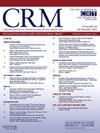Stroke volume index (SVI) predicts all-cause mortality following transcatheter aortic valve replacement (TAVR)
IF 1.6
Q3 CARDIAC & CARDIOVASCULAR SYSTEMS
引用次数: 0
Abstract
Background
Left ventricular systolic dysfunction in patients with severe aortic stenosis (AS) may result in low transvalvular gradients and underestimation of AS severity. A low-flow state may occur with reduced LVEF. Little is known about the implications of low compared to normal flow in patients with reduced LVEF undergoing transcatheter aortic valve replacement (TAVR).
Objectives
We compared survival rates with degree of flow across stenosed aortic valves and left ventricular dysfunction. We hypothesized that the stroke volume index (SVI) offers essential information regarding survival following TAVR.
Methods
We retrospectively reviewed patients with LVEF <50 % undergoing TAVR at the Gates Vascular Institute in Buffalo, New York, from 2012 to 2017. We performed Receiver Operator Characteristics to examine the value of SVI in predicting the postoperative outcome of patients. Kaplan-Meier and Cox regression analyses were used to investigate the effect of a low-flow state on five-year survival in patients with systolic dysfunction undergoing TAVR.
Results
Five-year survival following TAVR was decreased in patients with low-flow AS (SVI <35 mL/m2) compared to patients with normal flow. Seventy-four percent (n = 50) of patients with low-flow compared to 43 % (n = 22) of patients with normal flow were deceased five years post-TAVR (p ≤0.001). ROC curve indicated SVI to be a clinical predictor of five year survival (AUC 0.732, 95 % CI: 0.641–0.823, p < 0.001).
Conclusion
Patients with systolic dysfunction and low transvalvular flow AS had increased mortality five years following TAVR. These findings highlight a better prognosis in patients with normal flow and LV systolic dysfunction.
Condensed abstract
Low-flow aortic stenosis can occur with reduced left ventricular function. We compared survival rates of patients with known reduced left ventricular function in low-flow and normal flow aortic stenosis. This retrospective single-center study examined mortality rates following transcatheter aortic valve replacement. The mean gradient was not a predictor of mortality. This study shows patients with low-flow aortic stenosis have decreased five-year survival following valve replacement.
卒中容量指数(SVI)可预测经导管主动脉瓣置换术(TAVR)后的全因死亡率。
背景:重度主动脉瓣狭窄(AS)患者的左心室收缩功能障碍可能会导致跨瓣梯度过低和低估AS的严重程度。低血流状态可能会导致 LVEF 降低。对于接受经导管主动脉瓣置换术(TAVR)的 LVEF 降低的患者,低血流与正常血流相比有何影响,人们知之甚少:我们比较了主动脉瓣狭窄和左心室功能障碍患者的存活率。我们假设搏出量指数(SVI)能提供有关 TAVR 术后存活率的重要信息:我们回顾性地检查了有 LVEF 的患者:与血流正常的患者相比,低流量 AS(SVI 2)患者的 TAVR 术后五年生存率降低。74%的低血流患者(n = 50)在TAVR术后五年内死亡,而43%的正常血流患者(n = 22)在TAVR术后五年内死亡(P≤0.001)。ROC 曲线显示,SVI 是五年生存率的临床预测指标(AUC 0.732,95 % CI:0.641-0.823,p 结论:SVI 是五年生存率的临床预测指标:收缩功能障碍和低跨瓣血流 AS 患者在 TAVR 术后五年的死亡率增加。这些发现强调了血流正常和左心室收缩功能障碍患者的预后较好。简短摘要:低血流主动脉瓣狭窄可发生于左心室功能减退的患者。我们比较了已知左心室功能减退的低流量主动脉瓣狭窄和正常流量主动脉瓣狭窄患者的存活率。这项回顾性单中心研究考察了经导管主动脉瓣置换术后的死亡率。平均梯度不是死亡率的预测因素。这项研究表明,低流量主动脉瓣狭窄患者在瓣膜置换术后的五年存活率下降。
本文章由计算机程序翻译,如有差异,请以英文原文为准。
求助全文
约1分钟内获得全文
求助全文
来源期刊

Cardiovascular Revascularization Medicine
CARDIAC & CARDIOVASCULAR SYSTEMS-
CiteScore
3.30
自引率
5.90%
发文量
687
审稿时长
36 days
期刊介绍:
Cardiovascular Revascularization Medicine (CRM) is an international and multidisciplinary journal that publishes original laboratory and clinical investigations related to revascularization therapies in cardiovascular medicine. Cardiovascular Revascularization Medicine publishes articles related to preclinical work and molecular interventions, including angiogenesis, cell therapy, pharmacological interventions, restenosis management, and prevention, including experiments conducted in human subjects, in laboratory animals, and in vitro. Specific areas of interest include percutaneous angioplasty in coronary and peripheral arteries, intervention in structural heart disease, cardiovascular surgery, etc.
 求助内容:
求助内容: 应助结果提醒方式:
应助结果提醒方式:


